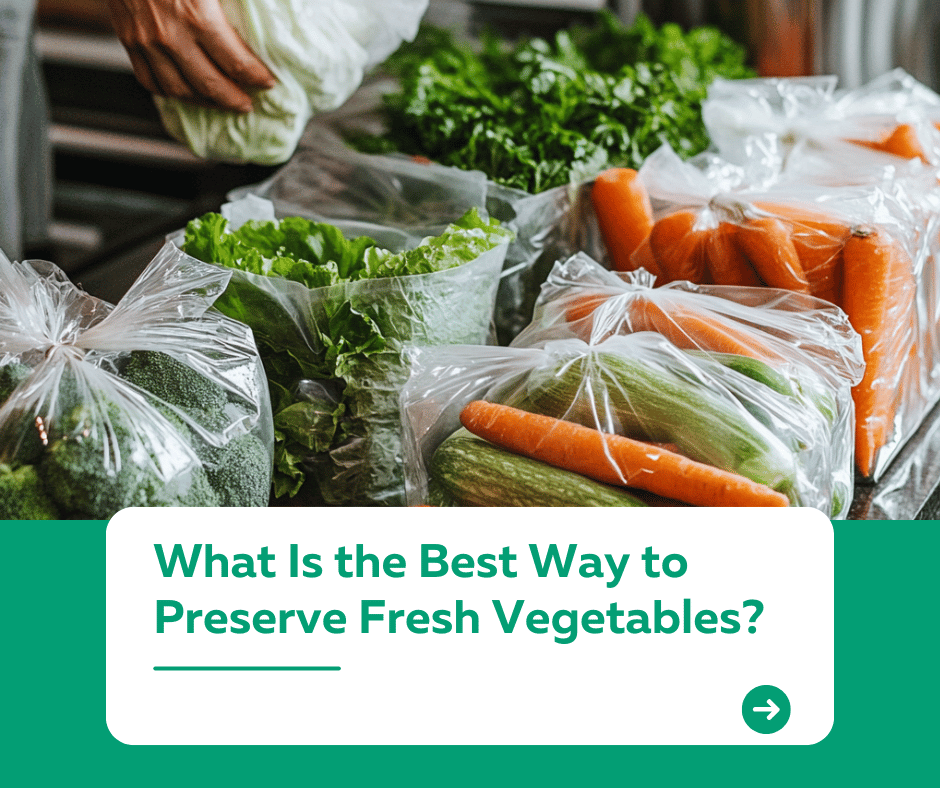
Introduction
Keeping vegetables fresh for as long as possible can be a challenge, especially when you want to minimize food waste and enjoy peak flavor. What is the best way to preserve fresh vegetables? In this article, we’ll dive into tried-and-true techniques to store your vegetables properly, ensuring they stay fresh, crisp, and flavorful for longer.
1. Understanding Vegetable Types
Vegetables can be divided into categories based on how they should be stored:
- Leafy Greens: Spinach, lettuce, kale, and herbs are delicate and need high humidity.
- Root Vegetables: Carrots, potatoes, and beets prefer cool, dark conditions.
- Fruiting Vegetables: Tomatoes, cucumbers, and peppers require moderate humidity.
Knowing these distinctions helps you tailor your storage methods for each type of vegetable.
2. General Tips for Vegetable Preservation
Regardless of the vegetable type, these tips can help:
- Avoid Washing Before Storage: Moisture can speed up spoilage. Wash just before use.
- Store in the Right Location: Some vegetables thrive in the fridge, while others prefer a pantry or countertop.
- Use Proper Containers: Airtight containers, breathable bags, and paper towels can help regulate moisture and airflow.
3. Storing Vegetables in the Refrigerator
The refrigerator is ideal for most vegetables, but using the correct methods ensures longevity:
- Leafy Greens: Wrap in a damp paper towel and place in a resealable bag or airtight container.
- Carrots and Celery: Store in a container filled with water to maintain crispness.
- Broccoli and Cauliflower: Keep in a perforated plastic bag for airflow.
4. Root Vegetable Storage
Root vegetables like potatoes and onions don’t need refrigeration. Instead:
- Cool, Dark Places: Store in a pantry, cellar, or kitchen cabinet to prevent sprouting.
- Keep Separate: Onions and potatoes should not be stored together, as they release gases that cause spoilage.
5. Freezing Vegetables
Freezing is an excellent option for preserving vegetables long-term:
- Blanching: Boil vegetables briefly, then plunge them into ice water to preserve color and texture.
- Portion and Freeze: Divide vegetables into portions and store in freezer-safe bags or containers.
- Label and Date: Always label frozen vegetables to track their freshness.
6. Common Mistakes to Avoid
Preserving vegetables can go wrong without proper techniques. Avoid these mistakes:
- Overcrowding in the Fridge: Crowded spaces restrict airflow and cause spoilage.
- Storing Ethylene-Producing Foods Together: Keep vegetables like leafy greens away from ethylene-producing fruits like apples and bananas.
- Ignoring the Temperature: Ensure your fridge is set between 35°F and 40°F (1.5°C to 4°C) for optimal storage.
Conclusion
The best way to preserve fresh vegetables involves understanding their needs and tailoring your storage methods accordingly. From using the refrigerator effectively to freezing for long-term preservation, these strategies will keep your vegetables fresh and reduce waste. For more kitchen tips and tricks, visit our website kuestion.